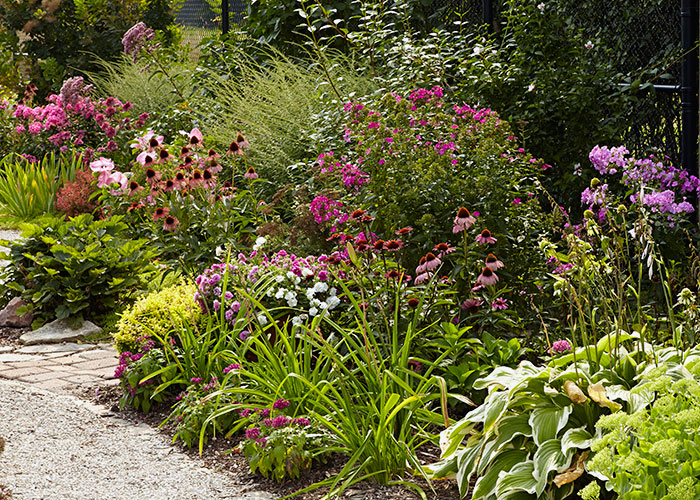
Your summer to-do list
During the warm days of summer, there’s no shortage of things to do in the garden. With a bit of planning, you can make the best use of your time by prioritizing what needs to be done. Schedule a regular time to cross off those chores on your summer garden checklist so that you don’t get overwhelmed.
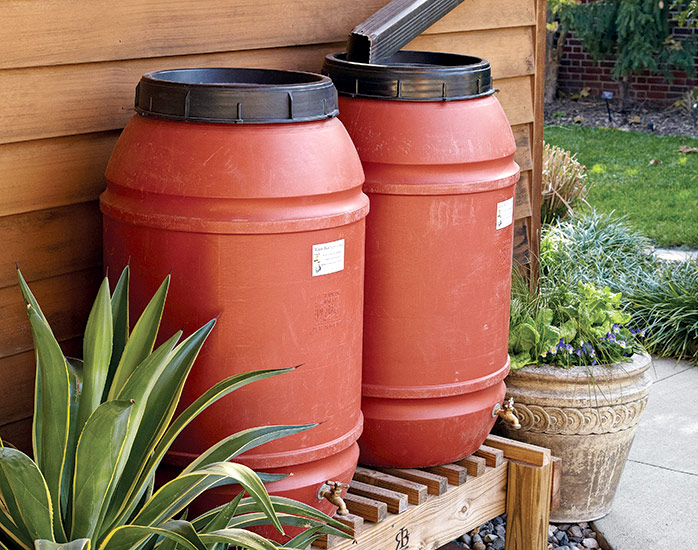
1. Invest in a rain barrel
Did you know that 623 gallons of water can be harvested from 1 in. of rain on a 1,000-square-ft. roof? In terms of rain barrels, a typical ½-in. rainfall will fill a 50- to 55-gallon barrel, like the ones shown above. All that rainwater can be used to water the plants in your garden. See more information here if you plan on using rain barrel water for homegrown vegetables.
Rain barrels are a great way to decrease your usage of municipal treated water. They are also important for our environment because they help reduce water pollution by decreasing the amount of stormwater runoff reaching our streams and rivers.
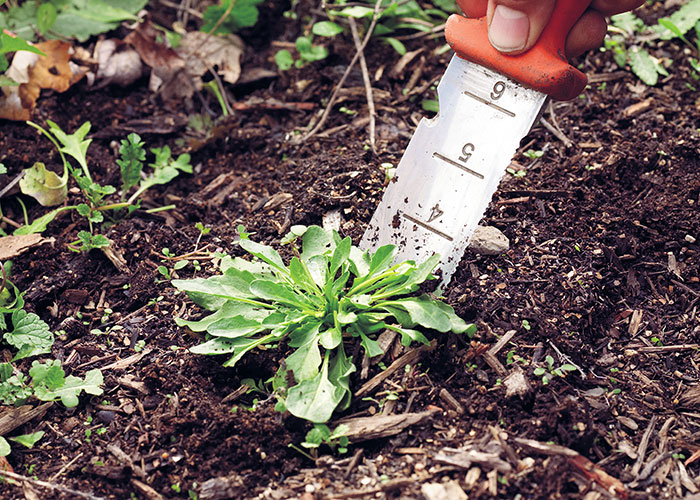
2. Manage weeds
If you’re a new gardener — or you’re tackling a wild and weedy space — the first season will likely be a rough one. Commit (and stick) to a weeding schedule, and don’t take on more space than you can manage. If you have more weeds than you can handle, keep weedy areas mowed until you’re ready to conquer them.
Weeding after a drenching rain makes the task easier. Don’t leave roots behind. If you yank only the leaves, weeds will grow back. Secure the weed close to the ground and pull straight up or dig it out. A soil knife with a forked tip makes weeding less of a chore.
You Might Also Like:
5 Ways to Remove Weeds without Pulling
Are You Using the Right Type of Mulch?
7 No-Spray Methods to Control Bugs in the Garden
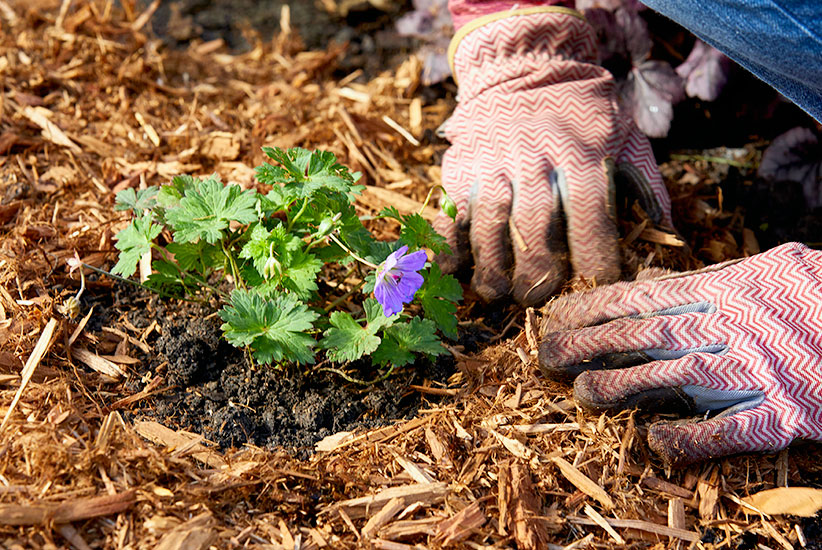
3. Add mulch
It’s best to let the soil warm up and dry out a bit before mulching beds and borders (it should be moist but not sticky). Adding too much mulch too soon in the season can trap the cold moisture in the soil, delay the emergence of plants and prevent the soil from properly drying out.
There are two rules for using mulch to combat weeds:
- First, lay the mulch down on soil that is already weeded.
- Second, lay down a thick enough layer to discourage new weeds from coming up through it. A 2- to 3-in. layer is usually enough.
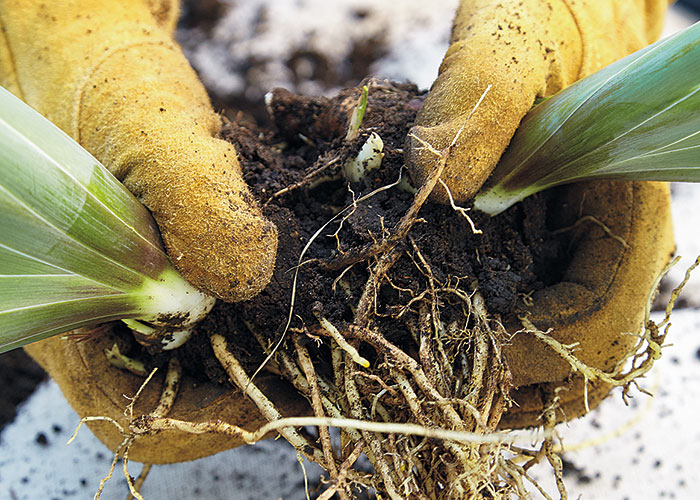
4. Divide bearded iris
Bearded iris (Iris spp. and hybrids) needs to be divided every few years, when flowering declines or the clump becomes crowded. Regular division will keep the plants flowering profusely and help prevent pest and disease problems. See our full guide to dividing 45+ favorite perennials.
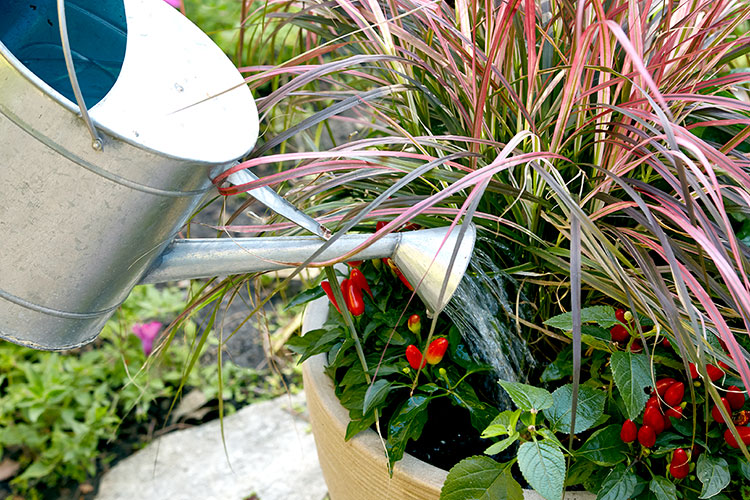
5. Feed container plants
It’s always a good idea to incorporate slow-release fertilizer into your planting medium when potting up plants (that is, if it doesn’t already contain fertilizer). During the growing season, use liquid forms for plants in pots and containers; it can be too easy to overdose with solid forms, which can scorch plant roots. Instead of big, infrequent doses, dilute a liquid fertilizer by half and feed every time you water.
Fertilizing tip
Not everything in pots needs feeding: Cacti and succulents, for example, perform best in poor or lean soils.
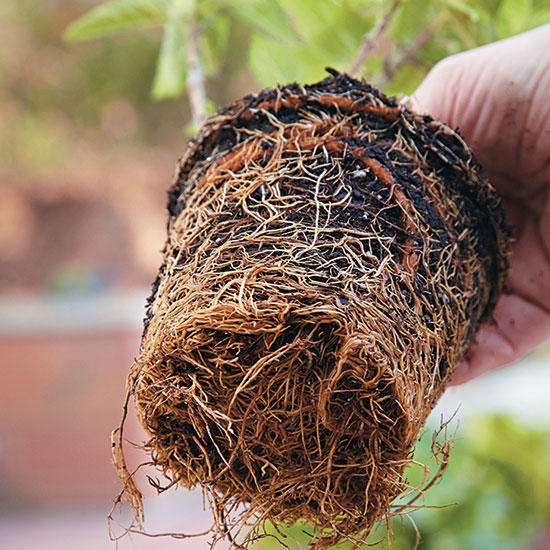
6. Pot up plants
Encourage new plant growth on a container plant by transplanting it into a pot that is one size larger than the one it was growing in. How do you know when a plant needs to be potted in a bigger pot? You need to check the roots. If you see roots growing out of the bottom drainage holes, it’s time. You can also tip the plant out of the pot and inspect the roots. If the roots are so dense you can barely see any soil, you need to up-size the pot.
You Might Also Like:
How to Root Prune Container-Grown Trees
Easy Summer Planter Ideas
Container Gardening Collection
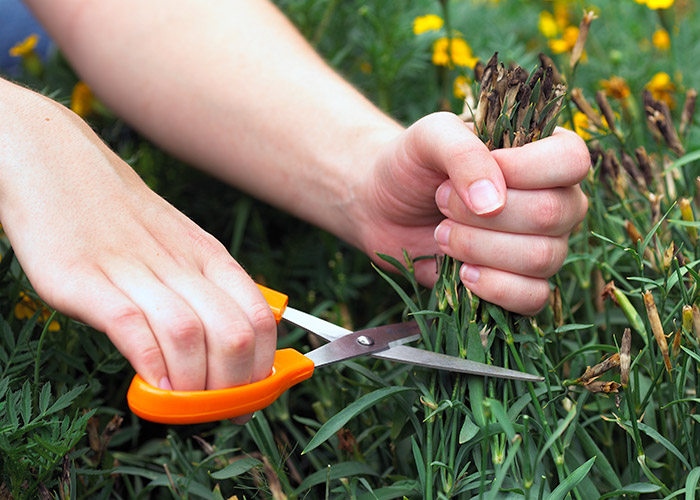
7. Deadhead plants
Deadheading is the term used for the removal of flowers from plants when they are fading or dead. It is done to keep plants looking attractive and to encourage more blooms, whether in beds and borders, containers or hanging baskets.
Regular deadheading directs energy into stronger growth and more flowers. Once the flowers are pollinated, seedheads, pods or capsules form, using up energy for more growth and flower development. The simplest method for deadheading is to just pinch off the faded blooms with finger and thumb, but a sharp pair of pruners can help. If you remove the flower with its stalk, the plant will look tidier.
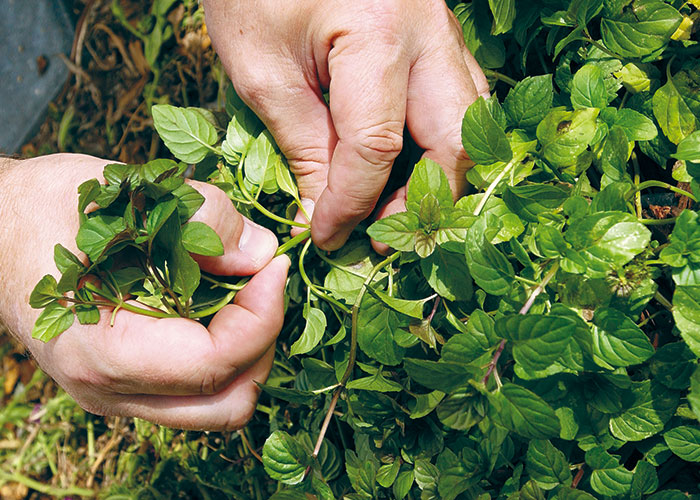
8. Harvest herbs
The best time to harvest your plants is when they are well watered and not stressed, perhaps a few hours after watering or the following morning. Perennial herbs, such as mint, sage, thyme and parsley, are the simplest to harvest: Cut about one-third to one-half of the plant’s height any time during the growing season. Annual herbs like basil that are grown for their leaves need regular harvesting throughout the summer.
Garden herb tips
- Periodic harvesting keeps herbs from going to seed.
- Preserving fresh garden herbs is a great way to use them after harvest, see four easy ways to preserve them here.
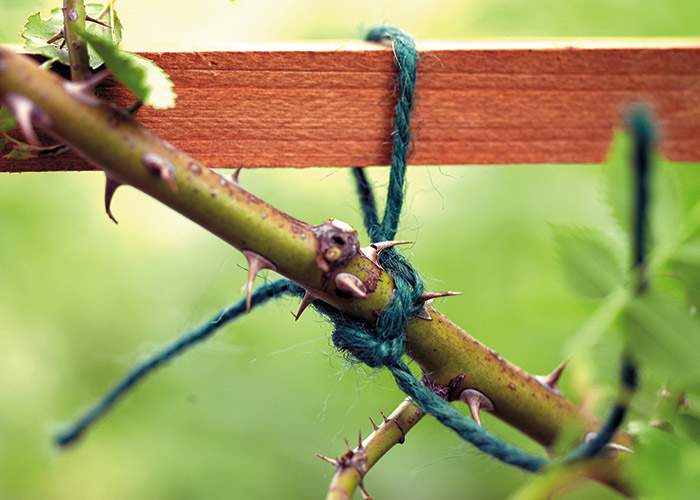
9. Train your climbing plants
No matter what type of vine you have, make sure you plant it at least 4 to 6 in. away from its support structure so its roots have a place to expand. To get vines going in the right vertical direction, start by attaching them loosely to the structure you want them to climb. Twine works well. Some climbers may need help the entire time they’re growing — you might have to keep tying them up as they grow higher and higher on their structure.
Twine alternative
Cut-up stockings also make a great tie for vines because they’re stretchy enough to allow the stems to expand as they grow, and soft enough that they won’t cut into the vine.















